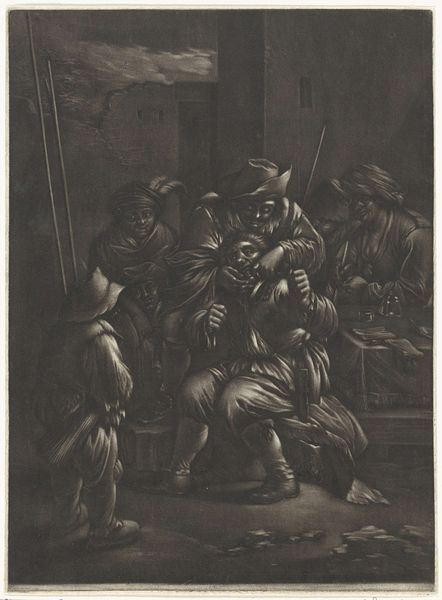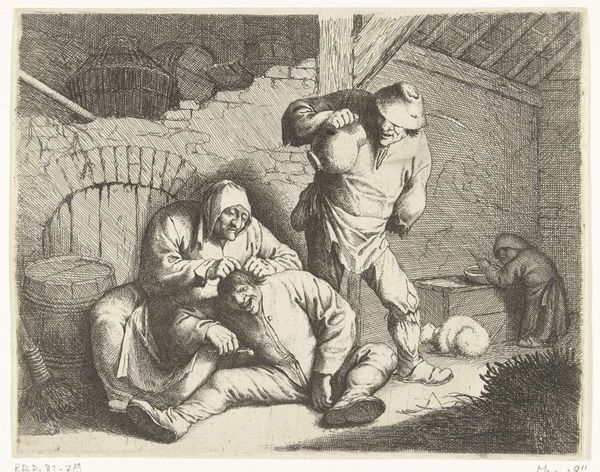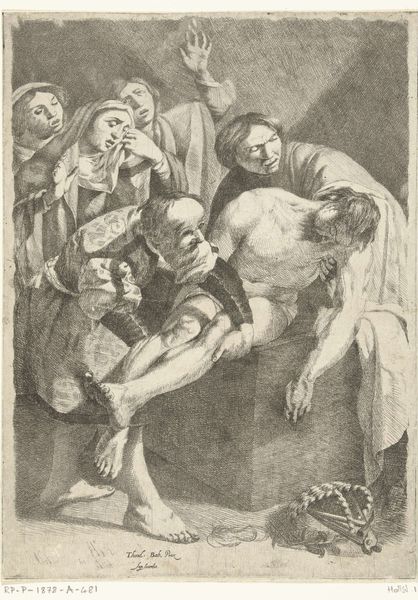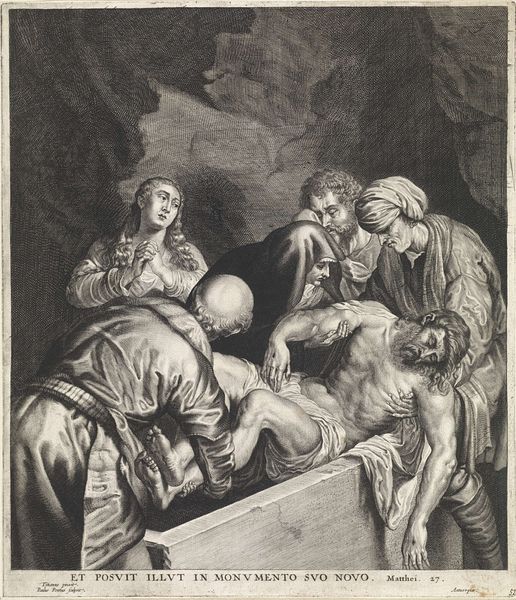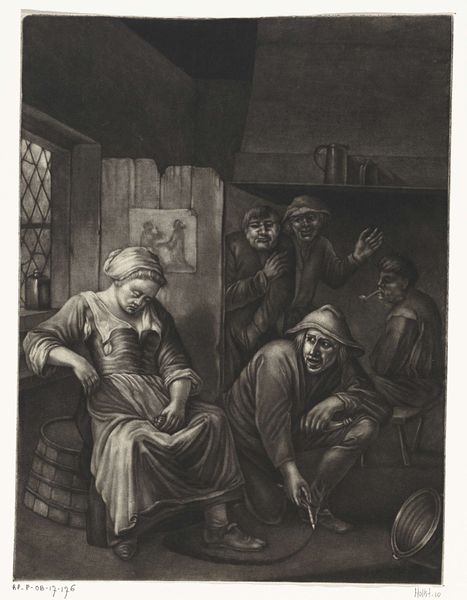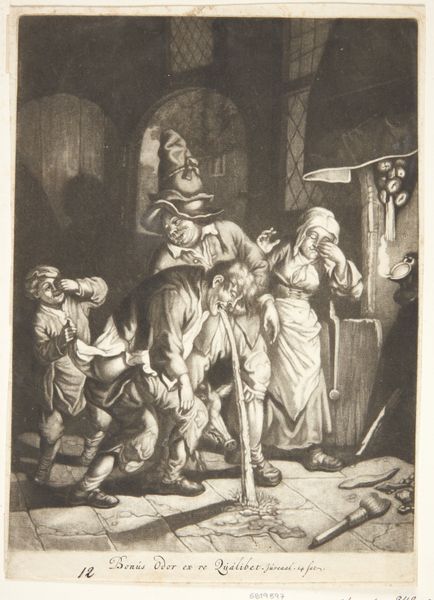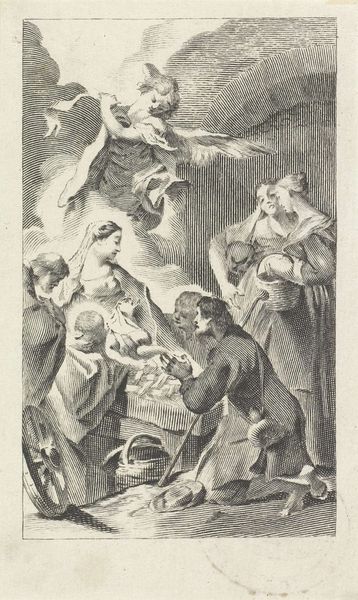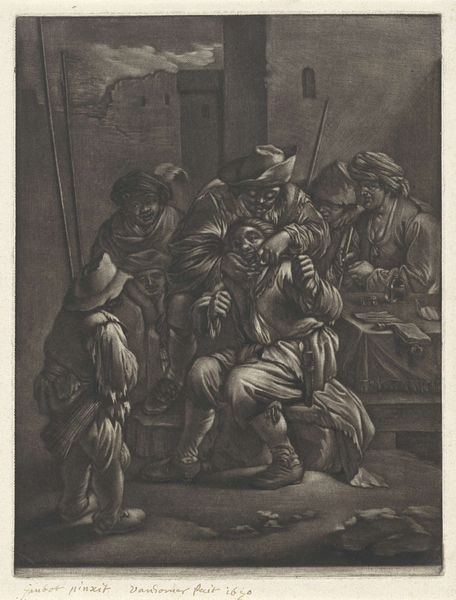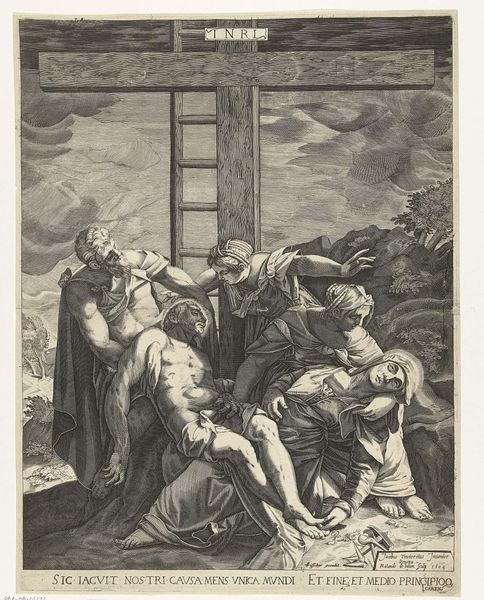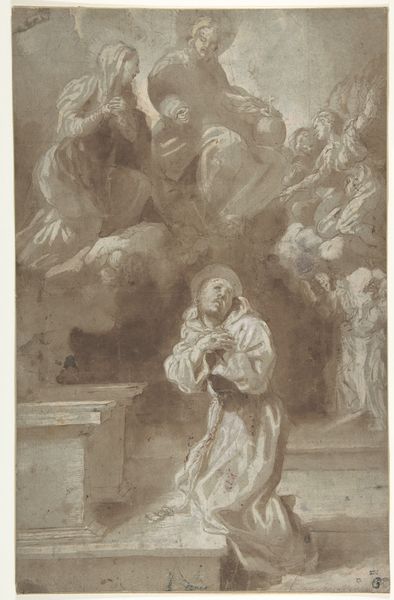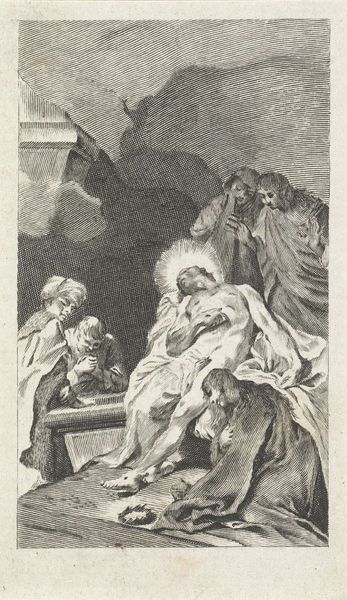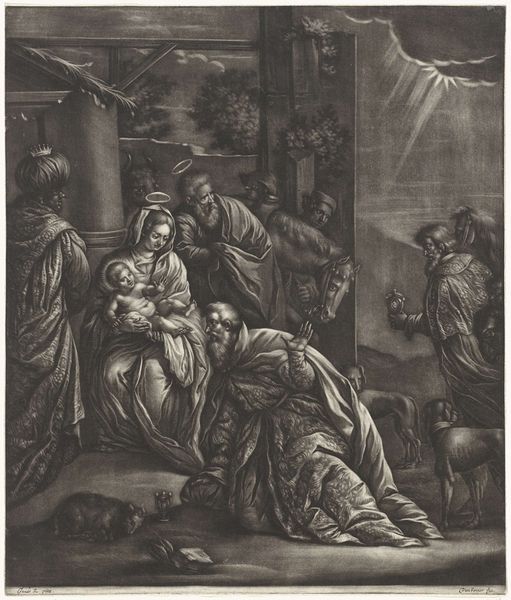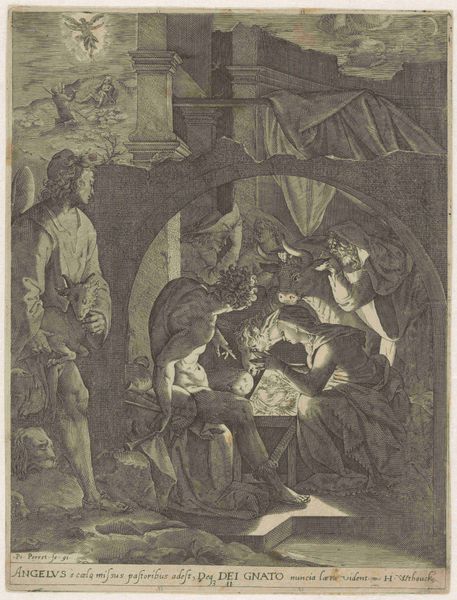
drawing, print, ink
#
drawing
# print
#
figuration
#
ink
#
romanticism
#
history-painting
Dimensions: 15-3/16 x 9-3/16 in. (38.6 x 23.3 cm)
Copyright: Public Domain
Editor: This ink drawing, "Visitation" by Domingos Sequeira, made sometime between 1768 and 1837, captures a biblical scene in swirling greys and whites. There’s a real sense of dynamic energy here. How do you interpret this work, especially within its historical context? Curator: Well, seeing "Visitation" through an activist lens demands that we look beyond its surface. Yes, it depicts a well-known biblical moment, the meeting of Mary and Elizabeth, both pregnant and divinely blessed. But I think it's interesting to consider how it interacts with issues of female agency and visibility in 18th and 19th century Europe. Editor: That's a great point. I hadn't thought about it like that. What aspects of the work lend themselves to that kind of reading? Curator: Note how Sequeira portrays these women, their forceful embrace conveying mutual recognition. It feels charged with the potential for creating change. Given the patriarchal constraints of the period, envisioning women taking control over their own stories takes on radical dimensions, almost an unspoken revolt. Can art become a vessel to subvert dominant paradigms and give credence to alternate versions of selfhood? Editor: I see what you mean. Looking at it now, there’s an unmistakable strength in their interaction, a challenge to established power dynamics, but also maybe a message of mutual support for women. It also invites viewers to challenge our own biases when it comes to works of art depicting interactions among marginalized people. Curator: Precisely. Through their quiet strength, we are asked to confront our prejudices and recognize the legitimacy and power in stories traditionally disregarded. And that is why this work still matters. Editor: This has shifted how I look at not just this piece, but others like it, understanding how we should engage with these pieces in the present. Thank you.
Comments
No comments
Be the first to comment and join the conversation on the ultimate creative platform.
